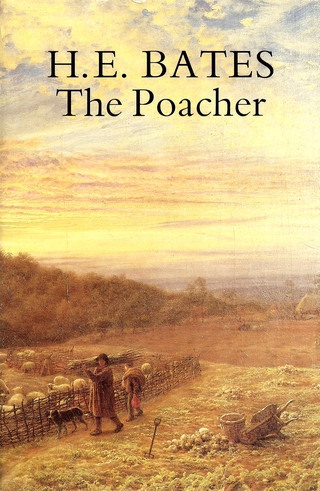
- ID
- a22
- Title
- The Poacher
- Genre
- Novel
- Page Count
- 304
- Word Count
- 62000
- Publisher
- Jonathan Cape
- Macmillan
- Publication Year
- 1935
- Document Types
- Radio Dramatizations
- Autobiographical
- Original Manuscript (mss)
- Topics
- Poachers, Music, Sport, Religion
London: Jonathan Cape, 1935 (January 21). New York: Macmillan, 1935 (March).
Dedication: "To Sam" (Sam Smith).
Bates's fifth novel (and the second of four novels dealing with the loss of rural life following The Fallow Land and preceding A House of Women and Spella Ho), was written from late 1933 to the fall of 1934.
It relates the life of Luke Bishop, from about 1880 (when Luke is about 20) to sometime after the first World War. Initially, the reader is introduced to Luke's father, who matches similar characters in Bates's fiction and non-fiction: an idler, poacher, drinker, shoemaker, story-teller, singer — a fiercely independent man, irresponsible in his marital and family duties, freethinking and atheistic, oddly generous, and, at harvest time, suddenly a tireless hired worker. Despite his aunt's kind and steady presence, Luke follows suit and finds himself accused of murder and seriously ill, but eventually settling down and raising a family. In the book's final section, he is a grandfather but increasingly out-of-place in a changed world and in his own family. Baldwin (1987, pp. 112-114) quotes Bates's brother Stanley to the effect that "The Poacher is almost a family history" and notes models for various characters in Bates's grandfather George William Lucas, Bates's father Albert, and in Bates himself. More generally, in his portrayal of the old-time shoemaker-poacher and the changes wrought upon society and the land, Bates tells the story of his home-town, Rushden. At least twice, extracts from the novel were published later in serials ("The Poacher at Work" and "A Poacher's Life").
The Novel was dramatized for BBC Radio by David H. Godfrey in 1974 in a production starring Geoffrey Matthews, Charles Simon and Elizabeth Morgan.
Writing in The Spectator, William Plomer begins by saying that "there must be very few novelists of Mr. H.E. Bates's generation...who have a more genuine talent or one that has been more carefully and successfully cultivated" He finds the novel "admirably natural and unforced...Mr. Bates is not a prophet or visionary, but an English watercolourist, painting his chosen subjects with skill and taste and good feeling, and in his chosen field he probably has few rivals." The reviewer in the Christian Science Monitor believes that "Mr. Bates is not really a novelist...[the book] has the cold beauty of a starlit night in winter rather than the warm, emotional development one expects to find in a novel." The New York Times praised the volume highly, saying "Beautifully and without affectation Mr. Bates has expressed through the story of Luke Bishop's life his deep feeling for the life of the English countryside, for the changes which have come over it in the last half century and his own nostalgic regret for the order which has passed." In a lengthy review of Bates's entire output to that date, Geoffrey West explores the strengths and limitations of someone who "must be deemed to stand in the front rank of living English writers under thirty."
A manuscript is held at the King's School, Canterbury (https://discovery.nationalarch...).
Reviews:
- Christian Science Monitor (March 20, 1935, p. WM12, attached)
- John O'London's Weekly (January 26, 1935, p. 667, Frank Kendon, attached)
- Life and Letters Today (February 1935, p. 616, attached)
- The New Statesman and Nation (January 26, 1935, p. 110, Peter Quennell, attached)
- New York Times (March 17, 1935, p. BR7, Margaret Wallace, attached)
- The Spectator (February 1, 1935, p. 178, William Plomer, attached)
- The Times (January 22, 1935, p. 7, attached)
- Times Literary Supplement (January 24, 1935, p. 45, Geoffrey West, attached)
- Saturday Review of Literature (March 16, 1935, p. 558, attached)
- New Republic (April 10, 1935, p. 262, Clara Stillman)

Downloads
The below reviews and articles are available in PDF format.